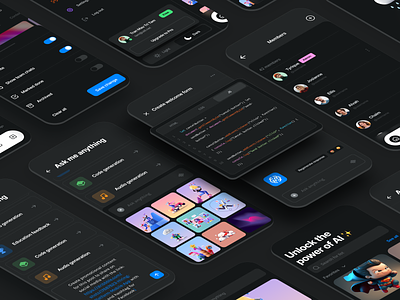As environmental awareness grows, businesses aim to reduce their impact. Sustainable UX design is essential for creating effective, eco-friendly digital products. This article explores sustainable UX principles and offers practical strategies for designing solutions that support broader environmental goals. Discover how to integrate user experience with eco-conscious practices to achieve impactful and sustainable results.
Comprehending Sustainable UX Design
Sustainability in UX design focuses on minimizing environmental impact throughout a product’s lifecycle. This involves considering energy consumption, material use, and the carbon footprint of user interactions. Despite their intangible nature, digital products still consume resources—ranging from data center energy to e-waste.
By incorporating sustainable UX design practices, businesses can make a positive environmental contribution.
Sustainable UX Design: Essential Principles and Practices
Sustainable UX design goes beyond aesthetics, impacting the entire product lifecycle and user behaviors. It ensures digital products support environmental goals while maintaining functionality and user satisfaction.
Explore examples of sustainable design in UX to see how these principles can be applied to create eco-friendly digital products that positively contribute to environmental sustainability.
1. Maximizing Efficiency through Minimalist Design
Opt for design interactions that minimize server requests and processing. Simplify user tasks to reduce data transfer and conserve energy. A minimalist design cuts down web page clutter, improving load times and reducing energy use. This approach also lessens cognitive load for users and computational demands on devices.
2. Designing with Dark Mode
Dark mode can cut screen light emissions, lowering energy use on OLED or AMOLED displays. This energy saving extends battery life, reduces charging frequency, and supports device longevity, contributing to overall sustainability.

3. User Awareness and Interaction
Informative design integrates features that educate users on the sustainability of their actions. For instance, a digital platform might display the carbon footprint saved by opting for digital receipts instead of paper. Highlighting such environmental benefits encourages users to adopt sustainable habits. Additionally, designers can set sustainable options as default settings to promote eco-friendly choices.
4. Inclusive and Accessible Design
Sustainable UX design must prioritize accessibility for all users, including those with disabilities, to enhance the product’s utility and longevity. By ensuring inclusivity, products become usable by a broader audience. Additionally, designers should account for diverse cultural contexts, as these can affect perceptions and adoption of sustainable practices. This approach maximizes the product’s reach and effectiveness across different user groups.
5. Lifecycle Perspective
Design for durability and timelessness, allowing for updates without full redesigns. This approach minimizes the need for frequent overhauls and extends the product’s lifecycle. Also, plan for the product’s end-of-life by facilitating easy data migration or archiving, ensuring smooth transitions when the product is retired.
6. Sustainable and Reusable Resources
When physical components are involved, like hardware for accessing digital products, prioritize renewable or recyclable materials. Designers should also encourage the use of renewable energy in data centers to lower the carbon footprint of digital operations.
By following these principles, designers and developers can enhance user experience while supporting a sustainable future.
Methods for Incorporating Sustainability in UX Design
Businesses can adopt various strategies to achieve sustainable UX, such as optimizing resource use and encouraging eco-friendly user actions. Leading companies have effectively implemented these approaches to advance sustainable design.
Whether you’re a small startup or a large enterprise, these strategies will help you create digital products that appeal to environmentally-conscious consumers and promote sustainability.
1. Enhance Resource Efficiency
Efficient Coding Practices: Crafting clean, efficient code reduces computational demands and energy use. This includes optimizing images and assets to improve loading speed and reduce bandwidth consumption.
For example, Google’s AMP (Accelerated Mobile Pages) project enhances website loading times on mobile devices, improving user experience and lowering energy consumption and data usage.
2. Identify Methods to Minimize Waste
Adopt Progressive Enhancement: Design digital products to operate on minimal specifications to ensure compatibility with older hardware, extending device lifespan and reducing waste.
For example, Microsoft’s Windows operating system remains functional on older machines, with new versions maintaining compatibility. This approach extends the life of hardware, reduces waste, and promotes sustainable usage.
3. Design for Durability
Modular Design: Develop user interfaces that are simple to update and maintain, reducing the need for complete redesigns and supporting longer product lifecycles.
For example, Fair phone employs a modular smartphone approach, allowing for easy part replacements instead of entire device swaps. This concept can be applied to UX design by creating adaptable interfaces that can be updated or modified with ease, thus extending the digital product’s lifespan.
4. Encourage User Interaction
User Education: Integrate features that inform users about their consumption habits and the environmental impact of their choices.
For example, A dashboard could display the carbon footprint of online activities. An example is the investment app Acorns, which provides sustainable investing options through ESG (Environmental, Social, and Governance) criteria, enabling users to make informed, eco-friendly investment decisions.
5. Adopt Sustainable Tools and Services
Green Hosting Solutions: Choose web hosting providers that use renewable energy or are dedicated to carbon neutrality.
For example, Green Geeks returns three times the power it uses to the grid as renewable energy, making it a top choice for reducing digital operations’ environmental impact. Additionally, Adobe’s Cloud platform enhances software energy efficiency and aims to run its data centers on 100% renewable energy by 2035.
Conclusion
Sustainability in UX design is essential, not just a trend, as digital products increasingly impact our lives. Integrating sustainable practices into the design process is crucial for responsible design.
By applying these principles and strategies, designers and businesses can foster a more sustainable future, offering products that users can enjoy with greater environmental mindfulness.




